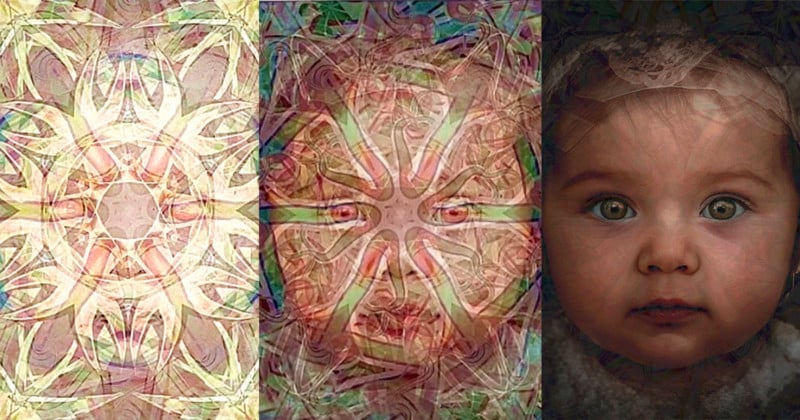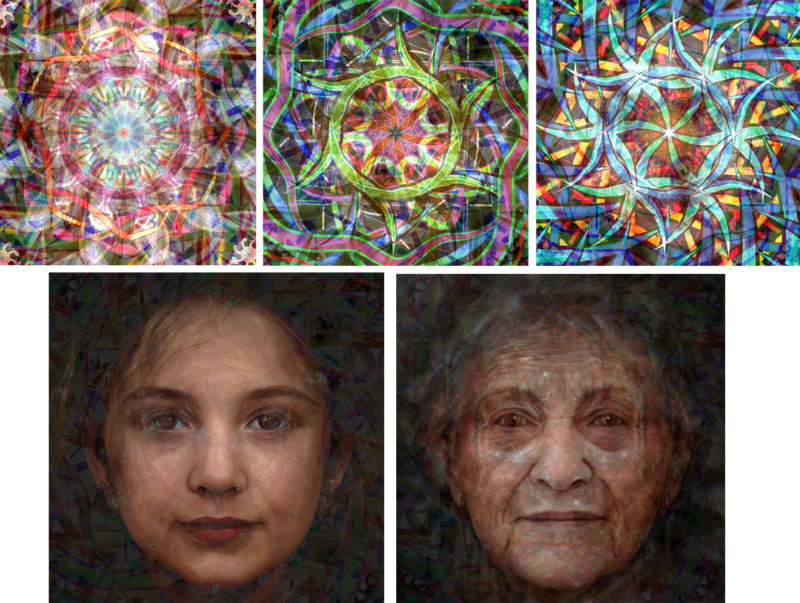Mind-Bending Geometric Art That Forms Photoralistic Portraits of People

An artist spent four years creating geometric art that forms photorealistic portraits when laid on top of each other.
The truly mind-bending aspect of Petros Vrellis’s work is that his geometric patterns can form a photo of a boy, but when one of the panels is rotated it can also show a photo of an old man.
Vrellis, a Greek artist, tells PetaPixel that he spent years developing a computer algorithm using openFrameworks tool kit that can blend images together in this way.
“After years of experimenting with color blending, I was very surprised to find that it is possible to hide images within other images,” he says.
Below are three geometric source images on the top row, and on the bottom row are two portraits of a girl and an older woman that are both formed from the source images. They appear differently according to the rotation of the colorful geometric patterns.

“The child is formed when the patterns are stacked with their current orientation, and the old woman is formed when the patterns are stacked after their rotation,” explains Vrellis.
“The effect is mind-bending to me, even after working on it for hundreds of hours. The power of today’s computers can mess with our brains.”
Vrellis says he created a “conventional” algorithm for the effect and that there was no artificial intelligence (AI) involved.
“Besides programming, endless hours of fine-tuning dozens of parameters is needed, in order to have the best results,” he says. “The use of AI is in my future plans, as it would definitely further improve the results and minimize the fine-tuning periods.”
Vrellis created the below video to demonstrate the awesome effect using a lightbox. He posted a second video where he takes nine real-life mugshots from the archive of an Australian police force and stacks them on top of each so they form an image of Jesus.
How the Algorithm Works
“Let’s assume we want to make the portrait of a baby by blending three geometric patterns (which is the simplest task),” explains Vrellis.
“The algorithm tries to affect as little as possible each pixel of the geometric patterns, in such a way that, when the three pixels are blended, they will form the exact corresponding pixel of the portrait of the baby.
“In this way, the final geometric patterns are still recognizable, because the changes made are quite subtle.”
More of Vrellis’s work can be found on his website. More about the geometric project can be found here.
Image credits: All photos by Petros Vrellis.